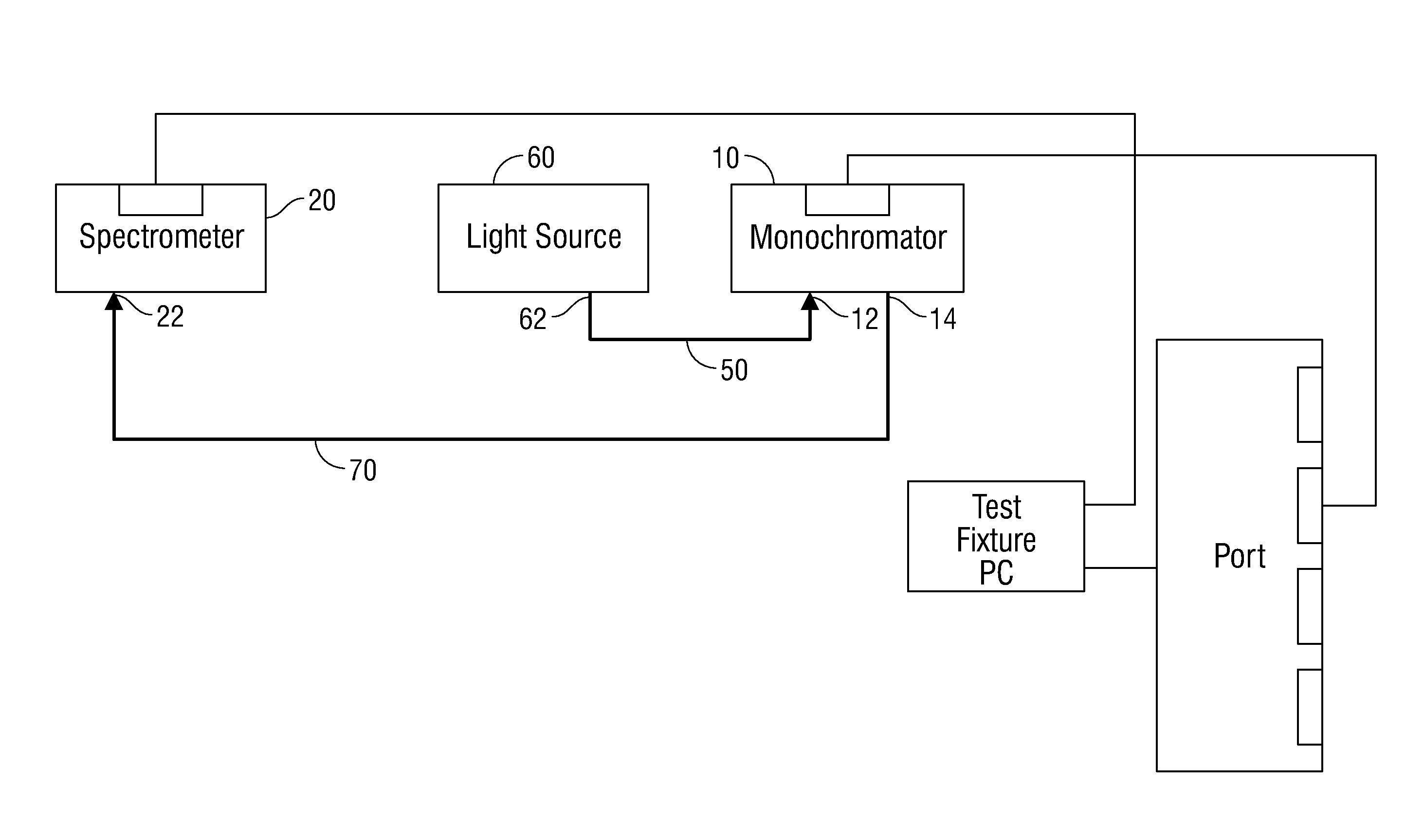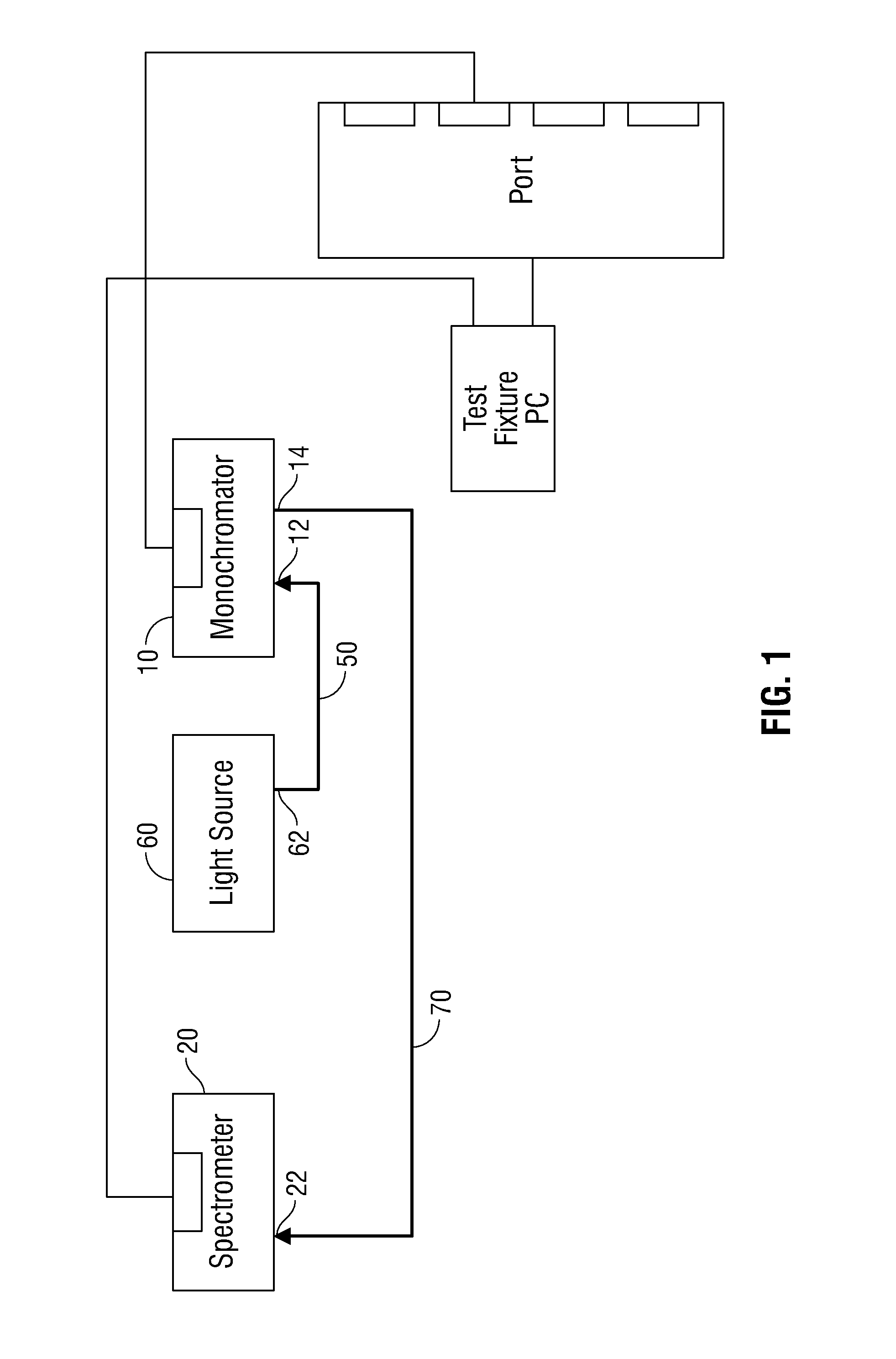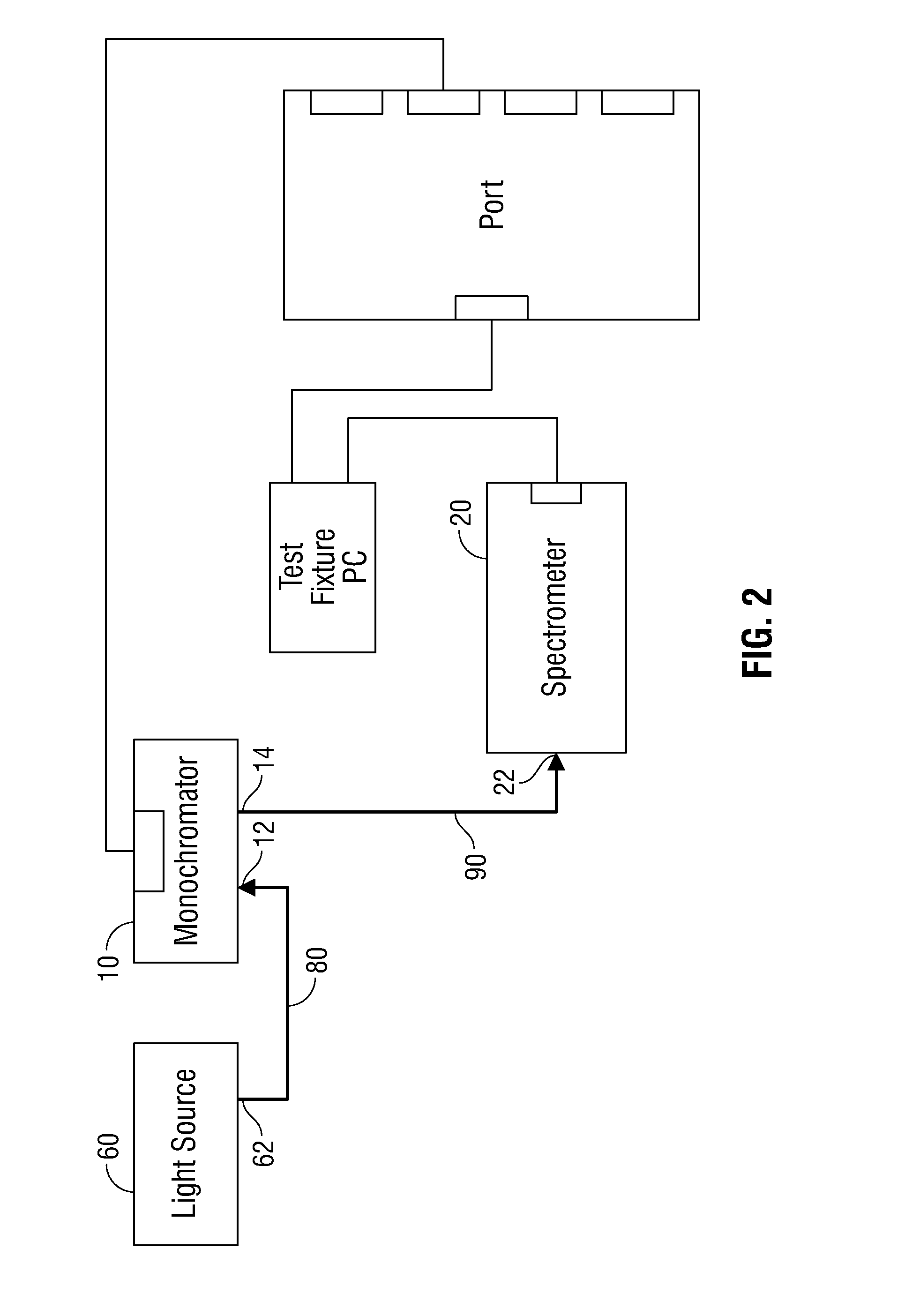Method of normalizing a fluorescence analyzer
a fluorescence analyzer and fluorescence technology, applied in the field of fluorescence analysis, can solve the problems of increasing the cost associated with the manufacture and qualification of such analyzers, and reducing the level of variation to insignificant levels
- Summary
- Abstract
- Description
- Claims
- Application Information
AI Technical Summary
Benefits of technology
Problems solved by technology
Method used
Image
Examples
embodiment 1
[0075]Initially, as discussed above, the module excitation spectrum data, relative irradiance as a function of wavelength, f(λi)m,ex,in, is collected as (wavelength, relative irradiance) ordered pairs, and is indexed accordingly. The module emission sensitivity data, detector counts as a function of monochromator step, is converted to (wavelength, relative irradiance sensitivity) ordered pairs in accordance with the monochromator calibration information discussed above, to yield a relative irradiance sensitivity spectrum as a function of wavelength, f(λi)m,em,corr. This emission sensitivity spectrum may be overlapped with a composite dry slide emission spectrum to minimize the effects of portions of the module emission sensitivity spectrum unimportant for calculating module normalization factors. Further, as mentioned above, both data sets may be filtered. The subscripts m, ex or em, and in or corr indicate, respectively, the specific module, excitation or emission sensitivity, and ...
embodiment 2
[0085]In another embodiment, as discussed above, the overlap between the spectra, e.g., the excitation and emission spectra, of the module and the slide, e.g., the fluorophore or sensor, is analyzed to determine the normalization factor for a particular analyzer and electrolyte to be detected. The relative overlap between the spectra is important because, for example, a particular module may more effectively excite the fluorescence of an “early” or “late” sensor (i.e., where there is greater overlap between the spectra) or may less effectively excite the “late” or “early” fluorescence of the sensor (i.e., where the spectra are less overlapped) thereby introducing a bias (or biases) toward and / or against a particular sensor's analyzer response. However, by analyzing the overlap between the spectra of the module and the “early” and “late” sensor spectra, such variations, or biases, can be accounted for in determining the normalization factor for a particular module and electrolyte (or...
PUM
 Login to View More
Login to View More Abstract
Description
Claims
Application Information
 Login to View More
Login to View More - R&D
- Intellectual Property
- Life Sciences
- Materials
- Tech Scout
- Unparalleled Data Quality
- Higher Quality Content
- 60% Fewer Hallucinations
Browse by: Latest US Patents, China's latest patents, Technical Efficacy Thesaurus, Application Domain, Technology Topic, Popular Technical Reports.
© 2025 PatSnap. All rights reserved.Legal|Privacy policy|Modern Slavery Act Transparency Statement|Sitemap|About US| Contact US: help@patsnap.com



